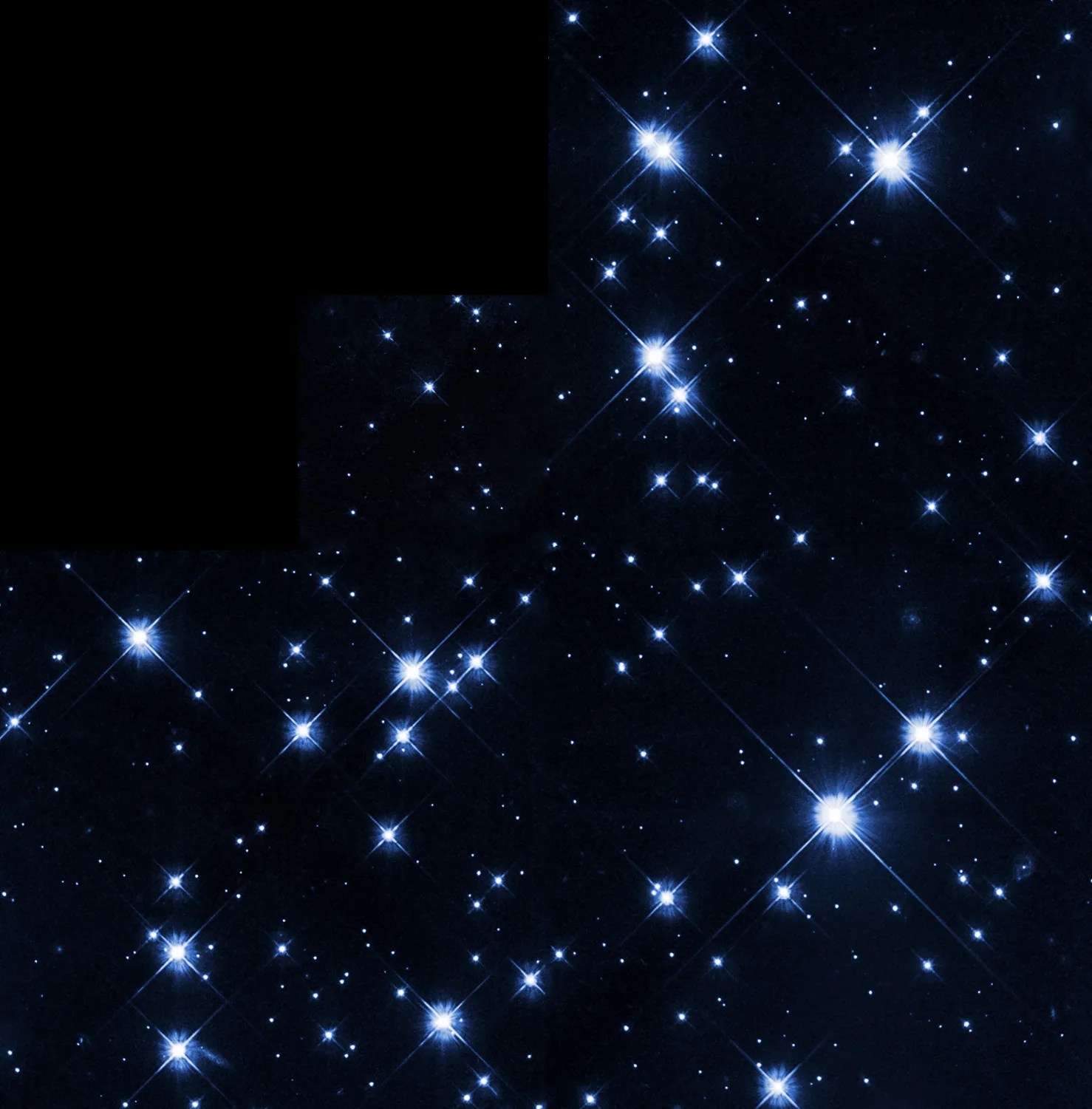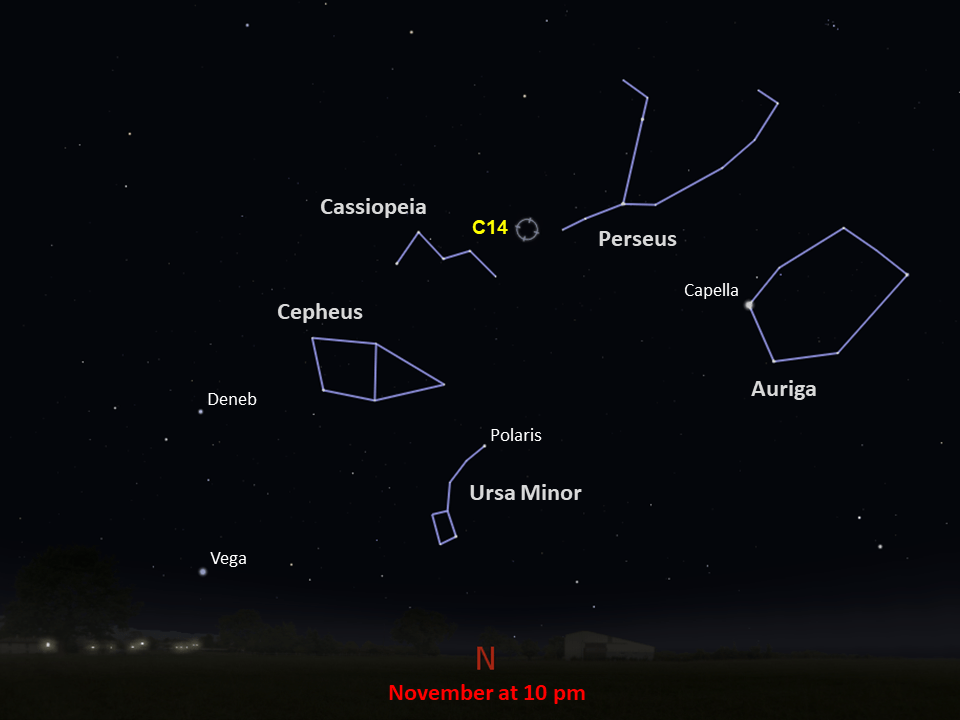Caldwell 14
These two bright star clusters appear side by side in the northern sky, about halfway between the constellations Perseus and Cassiopeia.
Distance
7,500 light-years
Apparent Magnitude
5.3 to 6.1
constellation
Perseus and Cassiopeia
object type
Open Cluster
Visible to the naked eye from a dark location, Caldwell 14 is popularly known as the Double Cluster in Perseus. These two bright open clusters, also called NGC 869 and NGC 884, appear side by side, about halfway between the bright stars in the constellations Perseus and Cassiopeia. Located about 7,500 light-years away, the clusters contain hundreds of hot, young stars that cause them to shine with apparent magnitudes of 5.3 and 6.1 in our sky. To the naked eye, the two clusters look like one large hazy patch, but binoculars and telescopes neatly split the pair, providing beautiful views of this celestial treasure. The Double Cluster appears highest for Northern Hemisphere observers during the late fall or early winter. (Southern Hemisphere observers close to the equator should look for it in late spring or early summer.)
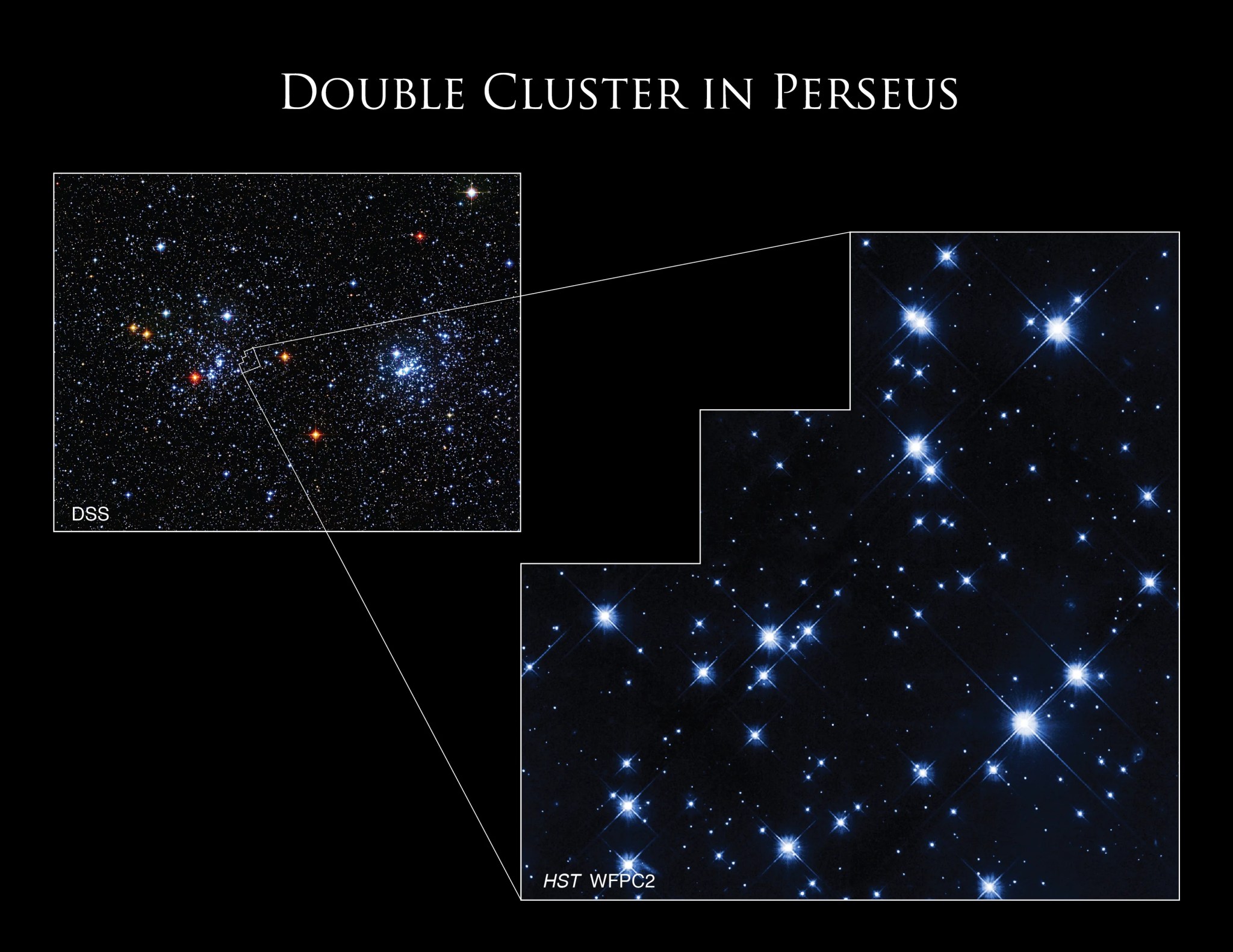
This Hubble image, taken with the Wide Field and Planetary Camera 2, shows stars in NGC 884 (the more eastern member of the pair). Captured through a single visible-light filter and colored blue, the image was taken as a “parallel” observation — obtained while the telescope was using another one of its science instruments to target a nearby object.
Glossary
Apparent Magnitude - The brightness of an astronomical object as seen from Earth, influenced by the object's distance from Earth, its absolute magnitude, and even gas and dust that lie between the object and Earth.
Open Cluster - A group of stars loosely bound by gravity, destined to be short lived because the gravitational interactions between members are weak enough that stars can be drawn away from the cluster by stronger gravitational forces.
Explore Hubble's Caldwell Catalog
The following pages contain some of Hubble’s best images of Caldwell objects.
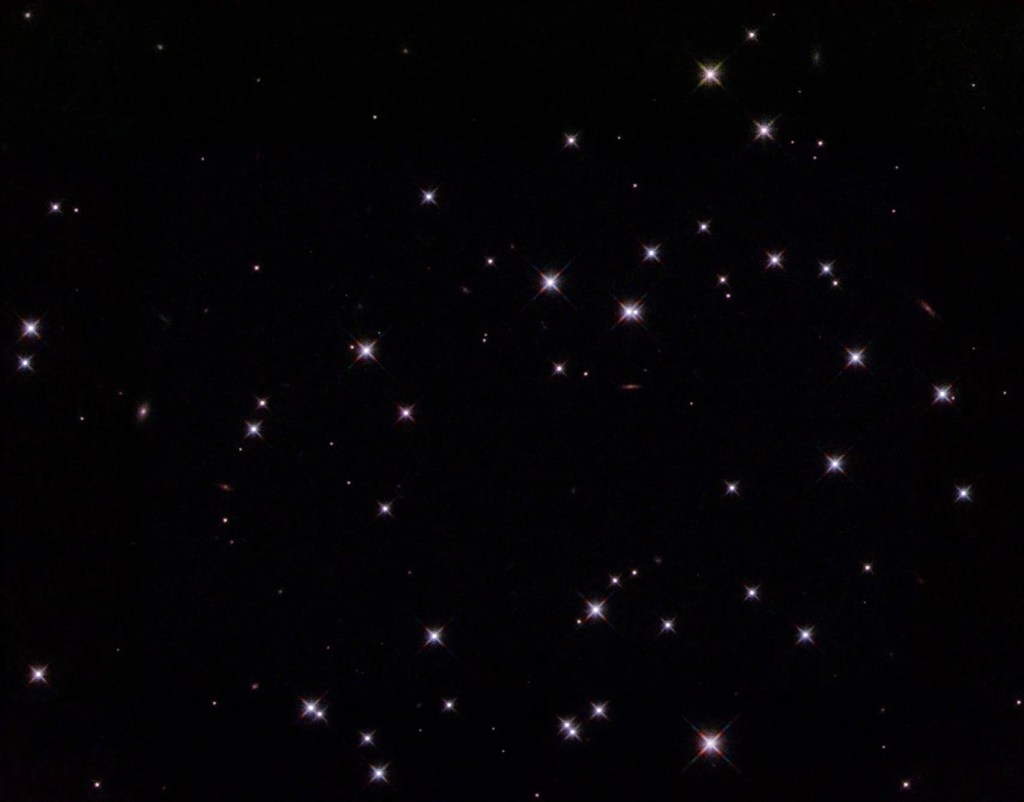
Also known as NGC 188, this group of stars formed from a large cloud of gas making the stars roughly…
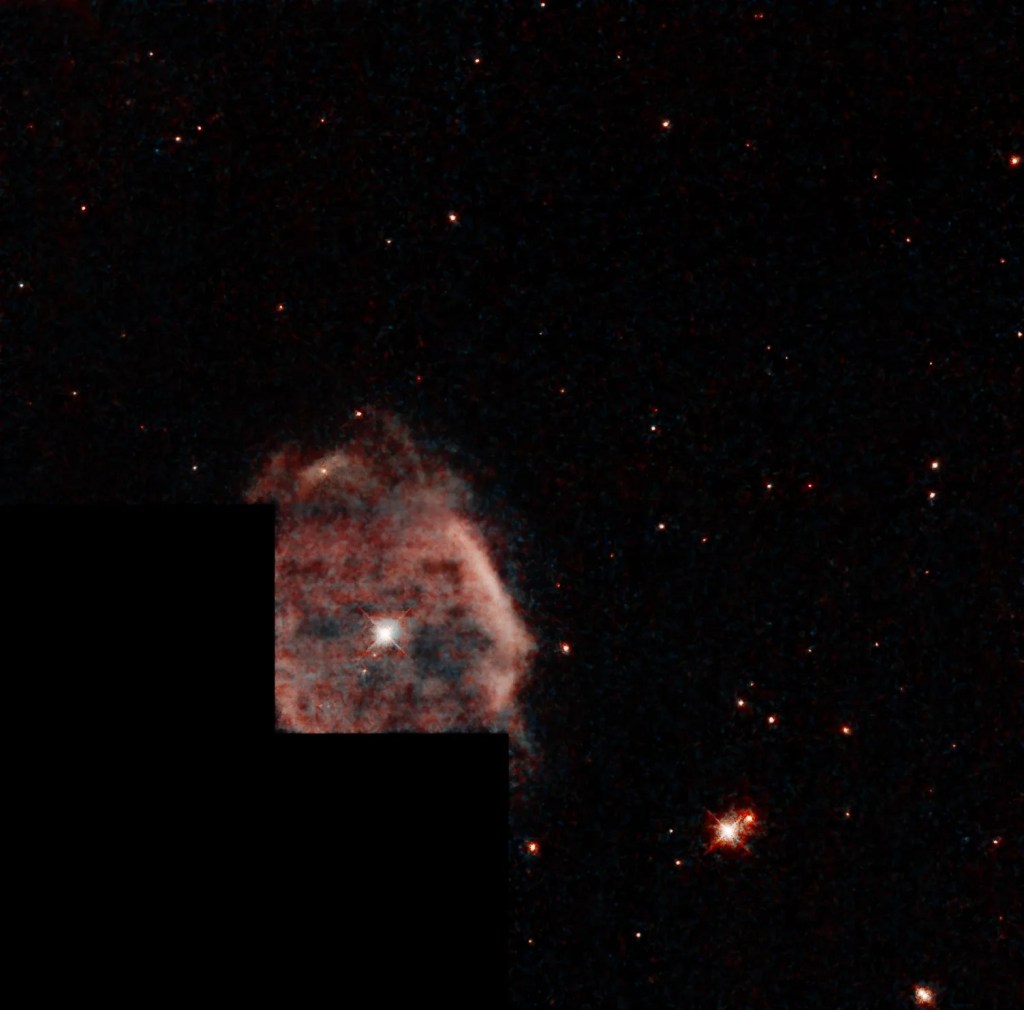
This shell of gas is expanding outward, away from the dying star within.
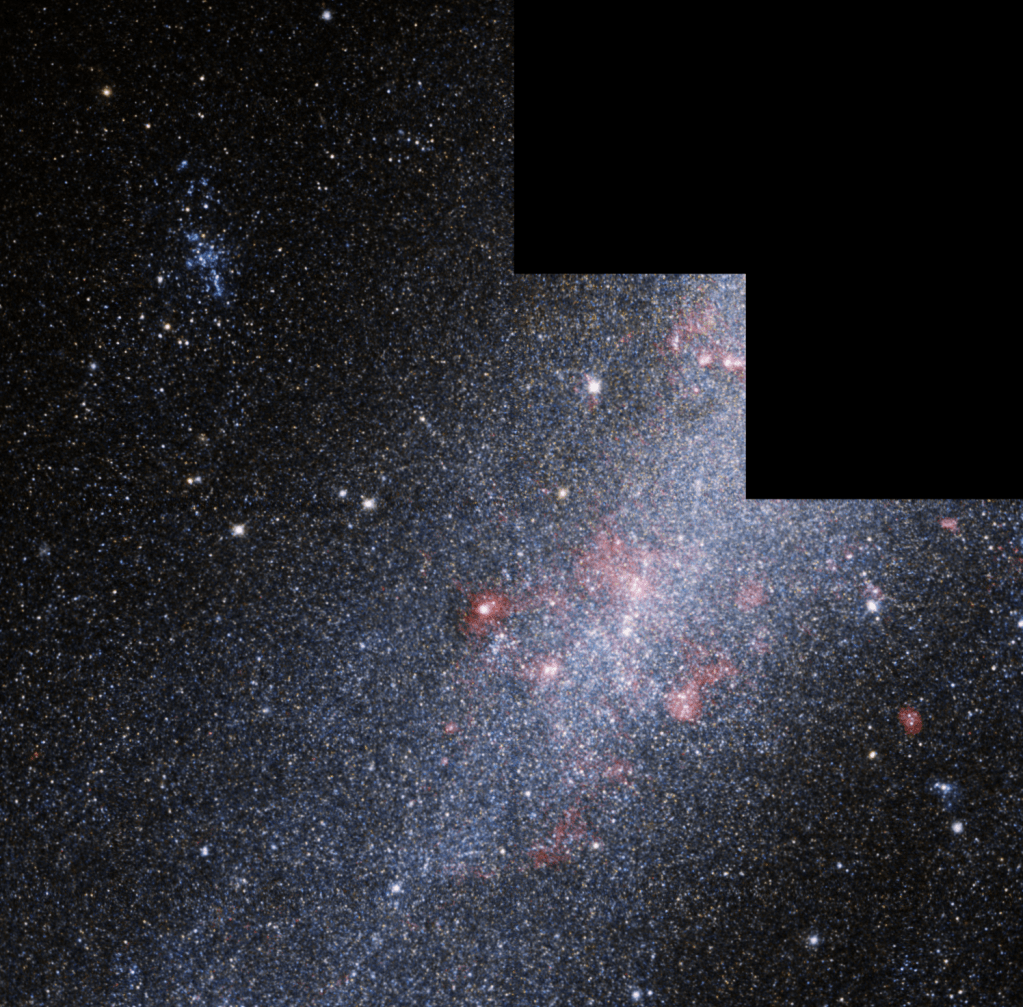
This barred spiral galaxy was first spotted by British astronomer William Herschel in April 1793 in the constellation Draco.

























